Abstract:
With the ever-increasing demand for data services, the spectrum becomes precious resource. The cooperative transmission mechanism, which allows broadcast and unicast to s...Show MoreMetadata
Abstract:
With the ever-increasing demand for data services, the spectrum becomes precious resource. The cooperative transmission mechanism, which allows broadcast and unicast to share the same spectrum, can effectively alleviate this situation. The success of LDM in ATSC 3.0 has inspired many scholars to superimpose broadcast and unicast services with a fixed power injection ratio. To further improve radio resource utilization, A flexible LDM scheme with a variable power injection ratio is proposed. The scheduling policy in Medium Access Control layer is formulated as a sequential decision problem, and it proved to have Markov property. A DRL-based algorithm is proposed to obtain the optimal scheduling scheme. Considering the requirements of broadcasting service and unicast services, the Lyapunov optimization method is used to convert the problem to the Lyapunov penalty form that is more conducive for the agent to learn the optimal strategy. Simulation results show that the proposed scheme can achieve much improved performance in system throughput when guaranteeing the quality of the broadcast service.
Published in: IEEE Transactions on Broadcasting ( Volume: 69, Issue: 3, September 2023)
Funding Agency:
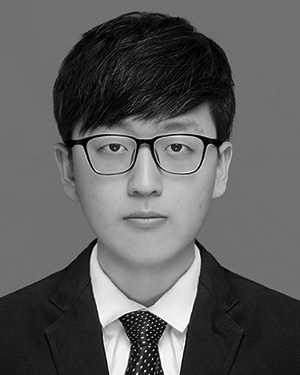
Cooperative Medianet Innovation Center, School of Electronics Information and Electrical Engineering, Shanghai Jiao Tong University, Shanghai, China
Xiaowu Ou (Student Member, IEEE) received the B.Eng. degree from Xidian University, Xi’an, China, in 2020. He is currently pursuing the Ph.D. degree in information and communication engineering with Shanghai Jiao Tong University. His research interests include nonorthogonal multiple access, rate-splitting multiple access, satellite communications, machine learning, and other technologies in wireless communication.
Xiaowu Ou (Student Member, IEEE) received the B.Eng. degree from Xidian University, Xi’an, China, in 2020. He is currently pursuing the Ph.D. degree in information and communication engineering with Shanghai Jiao Tong University. His research interests include nonorthogonal multiple access, rate-splitting multiple access, satellite communications, machine learning, and other technologies in wireless communication.View more
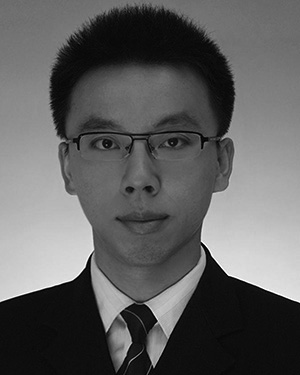
Cooperative Medianet Innovation Center, School of Electronics Information and Electrical Engineering, Shanghai Jiao Tong University, Shanghai, China
Yin Xu (Member, IEEE) received the B.Sc. degree in information science and engineering from Southeast University, China, in 2009, and the master’s and Ph.D. degrees in electronics engineering from Shanghai Jiao Tong University in 2011 and 2015, respectively, where he currently works as an Associate Professor. His main research interests include channel coding, advanced bit-interleaved coded modulation, and other physical-...Show More
Yin Xu (Member, IEEE) received the B.Sc. degree in information science and engineering from Southeast University, China, in 2009, and the master’s and Ph.D. degrees in electronics engineering from Shanghai Jiao Tong University in 2011 and 2015, respectively, where he currently works as an Associate Professor. His main research interests include channel coding, advanced bit-interleaved coded modulation, and other physical-...View more
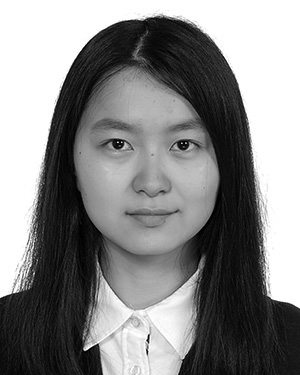
Cooperative Medianet Innovation Center, School of Electronics Information and Electrical Engineering, Shanghai Jiao Tong University, Shanghai, China
Hanjiang Hong received the B.Eng. and M.Eng. degrees from Shanghai Jiao Tong University, Shanghai, China, in 2016 and 2019, respectively, where she is currently pursuing the Ph.D. degree in information and communication engineering. Her research interests include bit-interleaved coding and modulations, geometric nonuniform constellation shaping, and other physical-layer technologies in broadcasting and 5G.
Hanjiang Hong received the B.Eng. and M.Eng. degrees from Shanghai Jiao Tong University, Shanghai, China, in 2016 and 2019, respectively, where she is currently pursuing the Ph.D. degree in information and communication engineering. Her research interests include bit-interleaved coding and modulations, geometric nonuniform constellation shaping, and other physical-layer technologies in broadcasting and 5G.View more
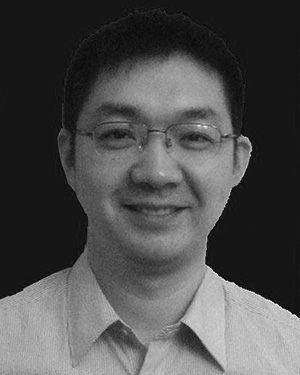
Cooperative Medianet Innovation Center, School of Electronics Information and Electrical Engineering, Shanghai Jiao Tong University, Shanghai, China
Dazhi He received the Ph.D. degree in electronic engineering from Shanghai Jiao Tong University, Shanghai, China, in 2009, where he is currently a Researcher with Cooperative Medianet Innovation Center. His research interests include wireless communications, smart transmission, and heterogeneous network.
Dazhi He received the Ph.D. degree in electronic engineering from Shanghai Jiao Tong University, Shanghai, China, in 2009, where he is currently a Researcher with Cooperative Medianet Innovation Center. His research interests include wireless communications, smart transmission, and heterogeneous network.View more
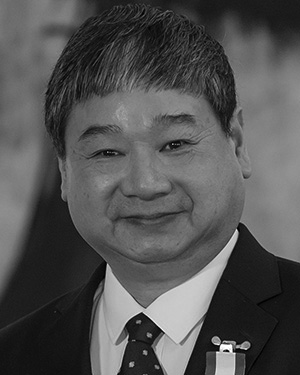
Wireless Technology Research Department, Communications Research Centre Canada, ON K2H 8S2, Ottawa, Canada
Yiyan Wu (Life Fellow, IEEE) received the M.Eng. and Ph.D. degrees in electrical engineering from Carleton University, Ottawa, Canada, in 1986 and 1990, respectively. He is a Principal Research Scientist with Communications Research Centre Canada. He is an Adjunct Professor with Carleton University, Canada, and Western University, Canada. He has more than 400 publications and received many technical awards for his contrib...Show More
Yiyan Wu (Life Fellow, IEEE) received the M.Eng. and Ph.D. degrees in electrical engineering from Carleton University, Ottawa, Canada, in 1986 and 1990, respectively. He is a Principal Research Scientist with Communications Research Centre Canada. He is an Adjunct Professor with Carleton University, Canada, and Western University, Canada. He has more than 400 publications and received many technical awards for his contrib...View more
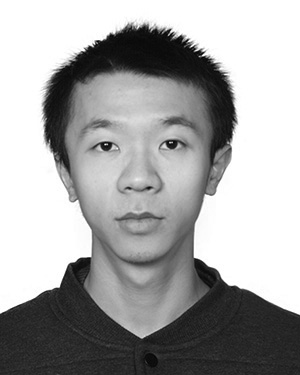
Strategy and Technology Department, Nokia Bell Labs, Shanghai, China
Yihang Huang (Member, IEEE) received the bachelor’s degree in information and communication engineering from the University of Electronic Science and Technology of China in 2014, and the Ph.D. degree in information and communication engineering from Shanghai Jiao Tong University in 2020. His research interests include digital signal and related receiver algorithms design and key technologies in the broadcast systems.
Yihang Huang (Member, IEEE) received the bachelor’s degree in information and communication engineering from the University of Electronic Science and Technology of China in 2014, and the Ph.D. degree in information and communication engineering from Shanghai Jiao Tong University in 2020. His research interests include digital signal and related receiver algorithms design and key technologies in the broadcast systems.View more
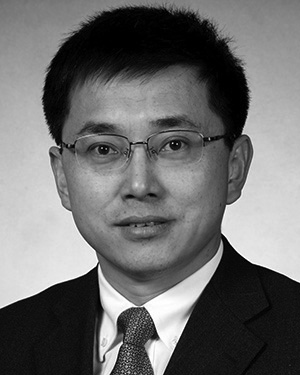
Cooperative Medianet Innovation Center, School of Electronics Information and Electrical Engineering, Shanghai Jiao Tong University, Shanghai, China
Wenjun Zhang (Fellow, IEEE) received the B.S., M.S., and Ph.D. degrees in electronic engineering from Shanghai Jiao Tong University, Shanghai, China, in 1984, 1987, and 1989, respectively. After three years’ working as an Engineer with Philips, Nuremberg, Germany, he went back to his Alma Mater in 1993 and became a Full Professor of Electronic Engineering in 1995. He was one of the main contributors to the Chinese DTTB St...Show More
Wenjun Zhang (Fellow, IEEE) received the B.S., M.S., and Ph.D. degrees in electronic engineering from Shanghai Jiao Tong University, Shanghai, China, in 1984, 1987, and 1989, respectively. After three years’ working as an Engineer with Philips, Nuremberg, Germany, he went back to his Alma Mater in 1993 and became a Full Professor of Electronic Engineering in 1995. He was one of the main contributors to the Chinese DTTB St...View more

Cooperative Medianet Innovation Center, School of Electronics Information and Electrical Engineering, Shanghai Jiao Tong University, Shanghai, China
Xiaowu Ou (Student Member, IEEE) received the B.Eng. degree from Xidian University, Xi’an, China, in 2020. He is currently pursuing the Ph.D. degree in information and communication engineering with Shanghai Jiao Tong University. His research interests include nonorthogonal multiple access, rate-splitting multiple access, satellite communications, machine learning, and other technologies in wireless communication.
Xiaowu Ou (Student Member, IEEE) received the B.Eng. degree from Xidian University, Xi’an, China, in 2020. He is currently pursuing the Ph.D. degree in information and communication engineering with Shanghai Jiao Tong University. His research interests include nonorthogonal multiple access, rate-splitting multiple access, satellite communications, machine learning, and other technologies in wireless communication.View more

Cooperative Medianet Innovation Center, School of Electronics Information and Electrical Engineering, Shanghai Jiao Tong University, Shanghai, China
Yin Xu (Member, IEEE) received the B.Sc. degree in information science and engineering from Southeast University, China, in 2009, and the master’s and Ph.D. degrees in electronics engineering from Shanghai Jiao Tong University in 2011 and 2015, respectively, where he currently works as an Associate Professor. His main research interests include channel coding, advanced bit-interleaved coded modulation, and other physical-layer technologies in broadcasting and 5G. He is also quite active in participating in standardization progress in ATSC3.0 and 3GPP. Recently, he is highly interested in studying the theory and technology on converged broadcasting and broadband networks.
Yin Xu (Member, IEEE) received the B.Sc. degree in information science and engineering from Southeast University, China, in 2009, and the master’s and Ph.D. degrees in electronics engineering from Shanghai Jiao Tong University in 2011 and 2015, respectively, where he currently works as an Associate Professor. His main research interests include channel coding, advanced bit-interleaved coded modulation, and other physical-layer technologies in broadcasting and 5G. He is also quite active in participating in standardization progress in ATSC3.0 and 3GPP. Recently, he is highly interested in studying the theory and technology on converged broadcasting and broadband networks.View more

Cooperative Medianet Innovation Center, School of Electronics Information and Electrical Engineering, Shanghai Jiao Tong University, Shanghai, China
Hanjiang Hong received the B.Eng. and M.Eng. degrees from Shanghai Jiao Tong University, Shanghai, China, in 2016 and 2019, respectively, where she is currently pursuing the Ph.D. degree in information and communication engineering. Her research interests include bit-interleaved coding and modulations, geometric nonuniform constellation shaping, and other physical-layer technologies in broadcasting and 5G.
Hanjiang Hong received the B.Eng. and M.Eng. degrees from Shanghai Jiao Tong University, Shanghai, China, in 2016 and 2019, respectively, where she is currently pursuing the Ph.D. degree in information and communication engineering. Her research interests include bit-interleaved coding and modulations, geometric nonuniform constellation shaping, and other physical-layer technologies in broadcasting and 5G.View more

Cooperative Medianet Innovation Center, School of Electronics Information and Electrical Engineering, Shanghai Jiao Tong University, Shanghai, China
Dazhi He received the Ph.D. degree in electronic engineering from Shanghai Jiao Tong University, Shanghai, China, in 2009, where he is currently a Researcher with Cooperative Medianet Innovation Center. His research interests include wireless communications, smart transmission, and heterogeneous network.
Dazhi He received the Ph.D. degree in electronic engineering from Shanghai Jiao Tong University, Shanghai, China, in 2009, where he is currently a Researcher with Cooperative Medianet Innovation Center. His research interests include wireless communications, smart transmission, and heterogeneous network.View more

Wireless Technology Research Department, Communications Research Centre Canada, ON K2H 8S2, Ottawa, Canada
Yiyan Wu (Life Fellow, IEEE) received the M.Eng. and Ph.D. degrees in electrical engineering from Carleton University, Ottawa, Canada, in 1986 and 1990, respectively. He is a Principal Research Scientist with Communications Research Centre Canada. He is an Adjunct Professor with Carleton University, Canada, and Western University, Canada. He has more than 400 publications and received many technical awards for his contribution to the research and development of digital broadcasting and broadband multimedia communications. His research interests include broadband multimedia communications, digital broadcasting, and communication systems engineering. He is a Distinguished Lecturer of the IEEE Broadcast Technology Society and a member of the ATSC Board of Directors, representing IEEE. He was appointed as a member of the Order of Canada in 2018. He is a Fellow of the Canadian Academy of Engineering.
Yiyan Wu (Life Fellow, IEEE) received the M.Eng. and Ph.D. degrees in electrical engineering from Carleton University, Ottawa, Canada, in 1986 and 1990, respectively. He is a Principal Research Scientist with Communications Research Centre Canada. He is an Adjunct Professor with Carleton University, Canada, and Western University, Canada. He has more than 400 publications and received many technical awards for his contribution to the research and development of digital broadcasting and broadband multimedia communications. His research interests include broadband multimedia communications, digital broadcasting, and communication systems engineering. He is a Distinguished Lecturer of the IEEE Broadcast Technology Society and a member of the ATSC Board of Directors, representing IEEE. He was appointed as a member of the Order of Canada in 2018. He is a Fellow of the Canadian Academy of Engineering.View more

Strategy and Technology Department, Nokia Bell Labs, Shanghai, China
Yihang Huang (Member, IEEE) received the bachelor’s degree in information and communication engineering from the University of Electronic Science and Technology of China in 2014, and the Ph.D. degree in information and communication engineering from Shanghai Jiao Tong University in 2020. His research interests include digital signal and related receiver algorithms design and key technologies in the broadcast systems.
Yihang Huang (Member, IEEE) received the bachelor’s degree in information and communication engineering from the University of Electronic Science and Technology of China in 2014, and the Ph.D. degree in information and communication engineering from Shanghai Jiao Tong University in 2020. His research interests include digital signal and related receiver algorithms design and key technologies in the broadcast systems.View more

Cooperative Medianet Innovation Center, School of Electronics Information and Electrical Engineering, Shanghai Jiao Tong University, Shanghai, China
Wenjun Zhang (Fellow, IEEE) received the B.S., M.S., and Ph.D. degrees in electronic engineering from Shanghai Jiao Tong University, Shanghai, China, in 1984, 1987, and 1989, respectively. After three years’ working as an Engineer with Philips, Nuremberg, Germany, he went back to his Alma Mater in 1993 and became a Full Professor of Electronic Engineering in 1995. He was one of the main contributors to the Chinese DTTB Standard (DTMB) issued in 2006. He holds 238 patents and published more than 130 papers in international journals and conferences. He is the Chief Scientist of the Chinese Digital TV Engineering Research Centre (NERC-DTV), an industry/government consortium in DTV technology research and standardization, and the Director of Cooperative Media Network Innovation Centre, an excellence research cluster affirmed by the Chinese Government. His main research interests include video coding and wireless transmission, multimedia semantic analysis, and broadcast/broadband network convergence.
Wenjun Zhang (Fellow, IEEE) received the B.S., M.S., and Ph.D. degrees in electronic engineering from Shanghai Jiao Tong University, Shanghai, China, in 1984, 1987, and 1989, respectively. After three years’ working as an Engineer with Philips, Nuremberg, Germany, he went back to his Alma Mater in 1993 and became a Full Professor of Electronic Engineering in 1995. He was one of the main contributors to the Chinese DTTB Standard (DTMB) issued in 2006. He holds 238 patents and published more than 130 papers in international journals and conferences. He is the Chief Scientist of the Chinese Digital TV Engineering Research Centre (NERC-DTV), an industry/government consortium in DTV technology research and standardization, and the Director of Cooperative Media Network Innovation Centre, an excellence research cluster affirmed by the Chinese Government. His main research interests include video coding and wireless transmission, multimedia semantic analysis, and broadcast/broadband network convergence.View more


